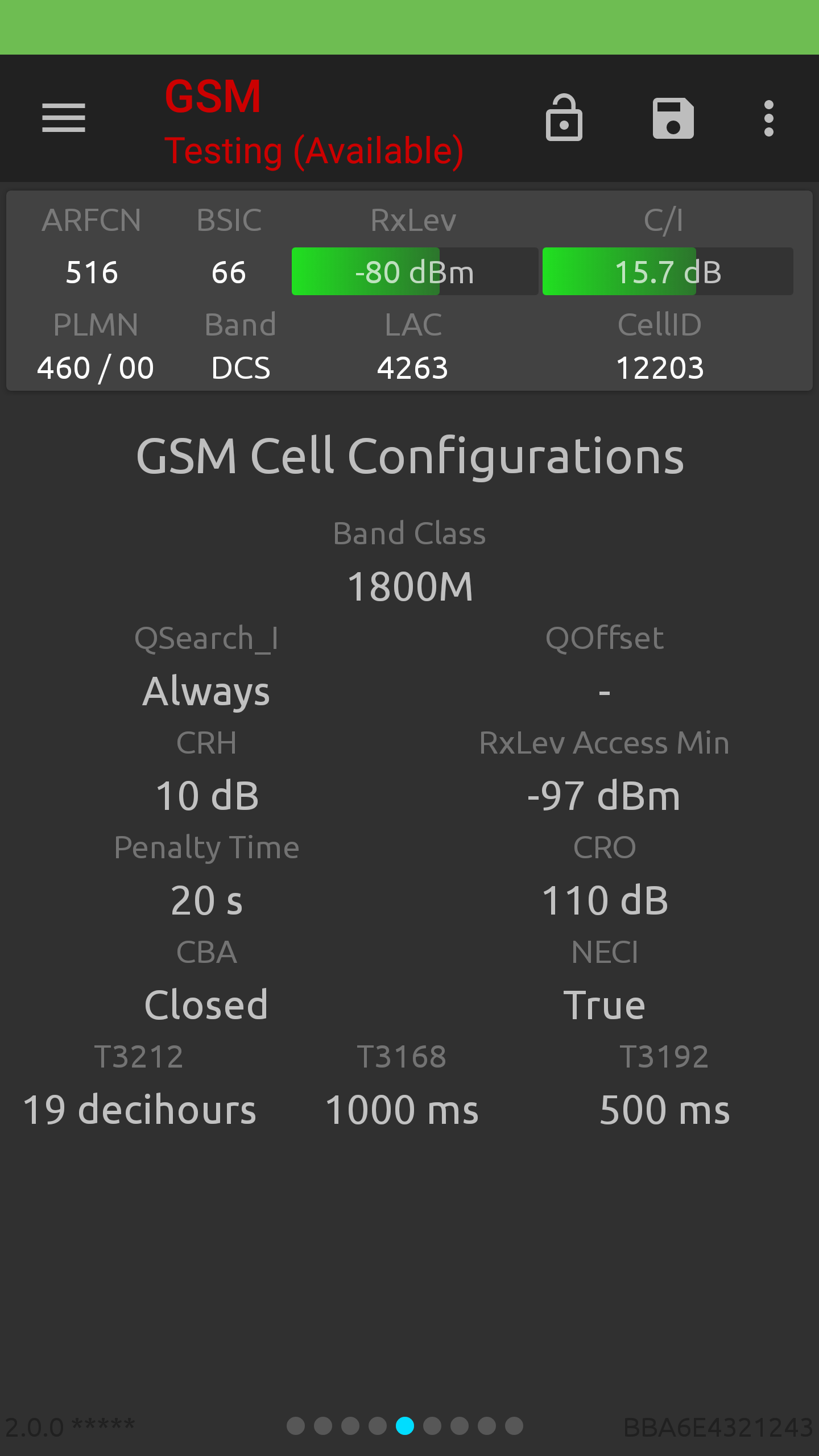GSM Cell Configurations
GSM Cell Configurations is as follow: Band Class: GSM Serving band, GSM900, DCS1800, PCS1900, 450M, 700M etc. QSearch_I: The value of rxlev for cell re-selection from GSM to UTRAN FDD. QOffset: The value of Qoffset for cell re-selection from GSM to UTRAN FDD. This is valid for both WCDMA and TD-SCDMA networks. CRH: Displays the setting of hysteresis which must be applied to the C1 criteria by the mobile in the idle mode to neighbor measurements for the purpose of cell re-selection (unit dB). RxLev Access Min: Identifies the setting of the minimum RxLev value that must be exceeded for the cell to be considered a candidate for "camping" in the idle mode. Penalty Time:Cell Reselect Penalty Time. Value range: 0~31, the corresponding time is 20~620s. 31 is to change the function direction of CRO on C2. CRO: Cell Reselect Offset. It is a parameter in C2 calculation to give a manual modification in MS cell reselection. Value range: 0~63, the corresponding level value: 0~126dB, stepped every 2dB. CBA: Cell Bar Access, worked together with CBQ to set the priority status of the cell in idle mode for cell selection and reselection. This is usually set to be active in the valid networks. NECI: In a GSM network, the traffic channel (TCH) consists of full-speed TCH and half-speed TCH. When the network supports half-speed TCH, the MS is informed of whether the area supports half-speed TCH by NECI. Half-speed TCHs enable each carrier to support more traffic channel, but you must confirm whether the system support half-speed TCH. T3212: It is Periodic Location Update Timer. It defines the period length of location updating. Recommendation: 30 (for urban area), 20 (for suburban area). Unit: 6 minutes. MS will make location update when detecting the change of location, besides, MS will make periodic location update controlled by parameter T3212. Once MS read T3212 from system info. It will store it in SIM card. When the time exceeds T3212 value, the location update process will be triggered. The shorter the period the better the performance, but it will bring more signaling load for system. On setting of this parameter, the processing capabilities of MSC and BSC should be considered, also the flows of A interface, Abis interface, Um interface as well as those of HLR and VLR. Generally larger value for continuous covered urban area while smaller in the suburb, countryside or the place with poor coverage. T3168: This field is the binary representation of the timeout value of timer T3168. Range: 0 to 7. The timeout value is given as the binary value plus one, in units of 500 milliseconds. This timer is used on the mobile station side to define when to stop waiting for a Packet Uplink Assignment message after sending a Packet Resource request message. T3192: This timer is used on the mobile station side when the mobile station has received all of the RLC data blocks. When the timer T3192 expires, the mobile station releases the resources associated with the TBF (e.g. TFI) and begins to monitor its paging channel. This field is the binary representation of the timeout value of timer T3192. |

